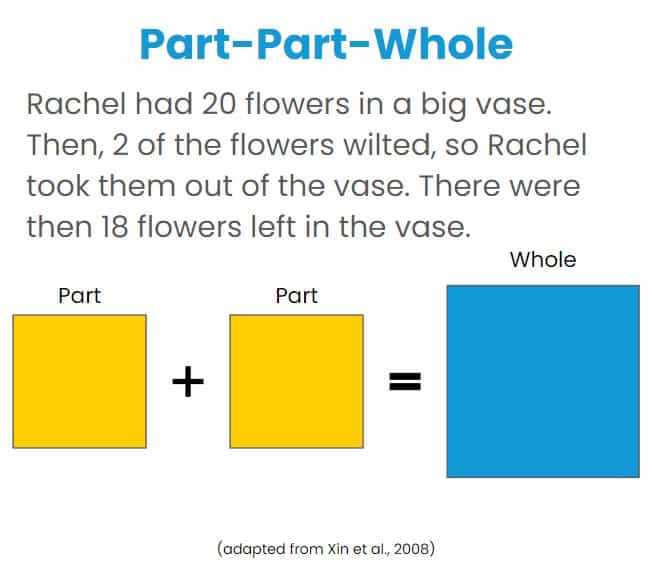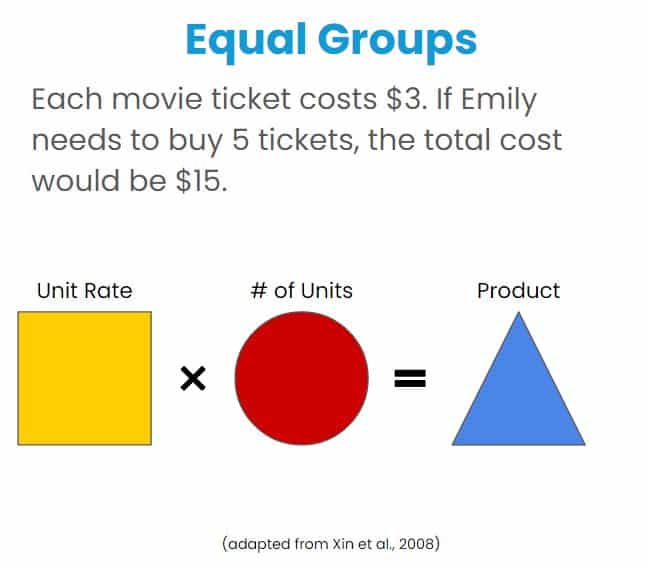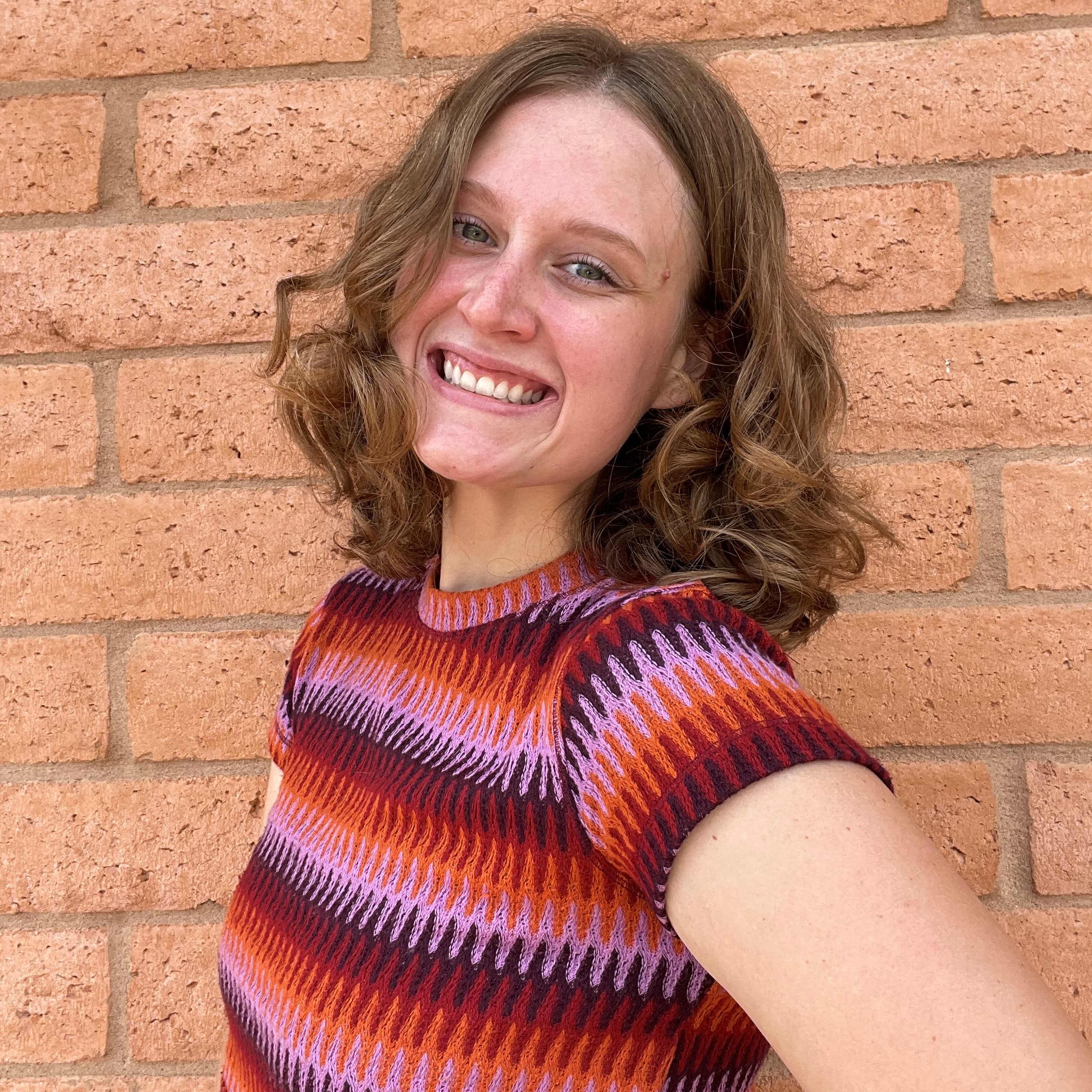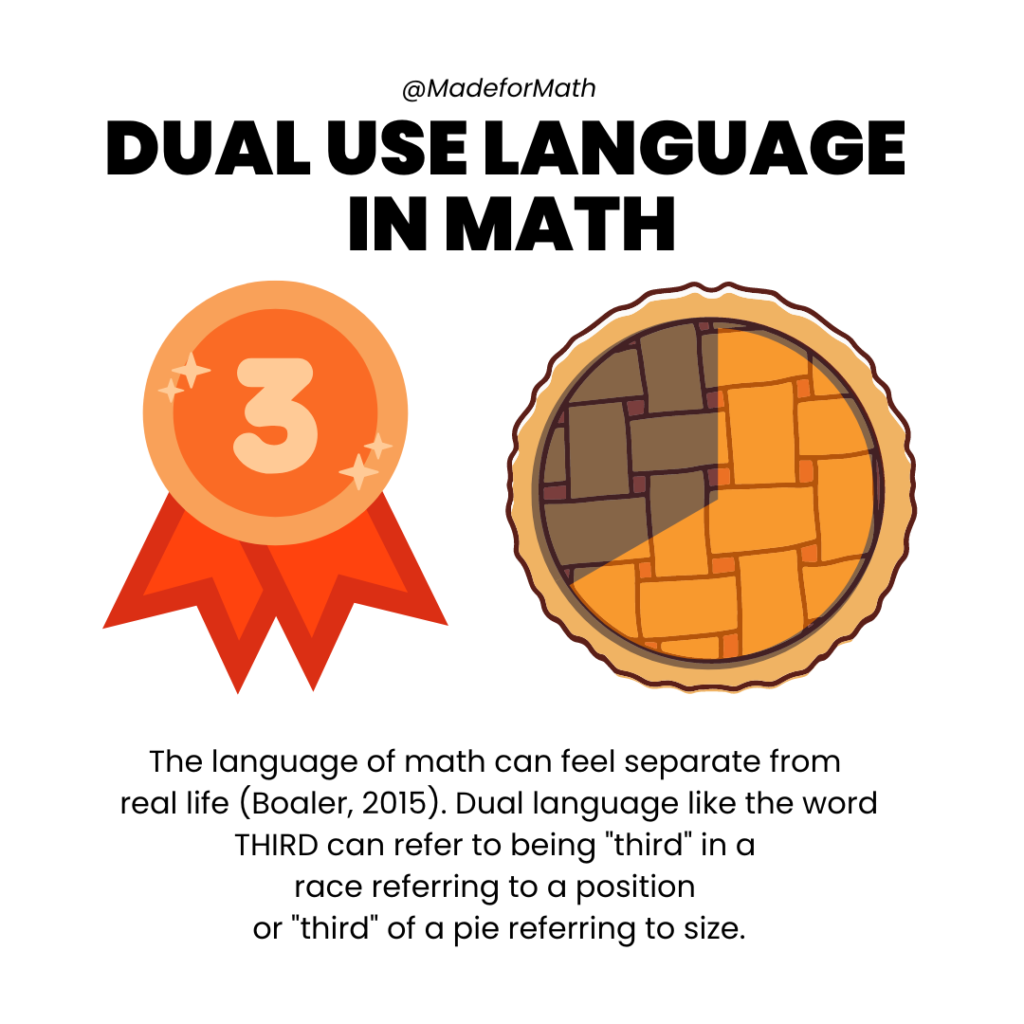Word Problem-Solving: Easy Visual Models for Dyscalculia
Makes sense considering many people can relate to the pain and suffering of solving word problems but especially students with a math learning disability. In this article, we’ll talk about why word problems are so difficult, explore what the research suggests, and share an effective model to help students! Join in the conversation with researcher Dr. Xin of Purdue and learn all about visual word problem-solving.
Table of Contents
Why is word problem-solving so difficult for students but especially for those with a math learning disability?
The semantics and language of math can be super strange and completely separate from real-life (Boaler, 2015). There are many instances of dual use for language such as being third in a race or eating a third of a pie. To make it even more complex, students with math learning disabilities typically have weaker working memory which makes working with numbers while reading a word problem difficult.
Why keyword strategies for solving word problems is not a reliable approach
Many teachers are confused about how to guide students in solving word problems. Generally, teachers find themselves coaching students to use keywords and match them to an operation. This causes students to mostly guess and check. However, this method is ineffective as students are making surface-level analyses instead of looking for deeper structures through relationships between the context and numbers (Parmar et al., 1996).
Another common method teachers use is the four-step strategy: read, plan, solve, and check. This is a general heuristic procedure. Or basically, this is another fancy way of saying, “Let’s guess and check”.
In the video below, the What Works Clearinghouse shared from Dr. Beckmann why keyword strategy for solving word problems is an oversimplified tool.
What word problem method does the research suggest?
What Works Clearinghouse shows there is strong evidence for instruction on solving word problems that is based on common underlying structures. What does that even mean?
Word problems generally follow a pattern that can be translated into algebraic models which means we can solve for an unknown quantity. The sooner we teach students this skill set, the better!
Representing problems in mathematical model equations (e.g., part + part = whole, or unit rate x number of units = product), students do not have to memorize numerous rules to make decisions on the choice of operation for finding the solution; rather, the mathematical models, which depict mathematical relations involved in the problem, provide students with a defined algebraic equation for the solution.
What word problem-solving approach do we recommend?
Dr. Xin created a program called Conceptual Model-Based Problem Solving (COMPS) which simplified other programs and moved it to a model-based algebraic approach. We love this program because it allows students to learn skills that will work for the long haul of mathematics.
Xin borrowed from the simplicity of Story Grammar to create simple models that students can use.
You may have been taught this model at some point in your teaching career. Every story has a clear beginning, middle, and end.
Likewise, simple models in mathematics help students organize their thinking.
How do model-based strategies help with word problems?
The Made for Math team tested the COMPS program with our students and found that this method helps students connect their math manipulatives to the algebraic models. Let’s look at the two models!
Part-Part-Whole

These types of word problems are additive, meaning that we’re taking two parts and creating a whole. Here students are explicitly taught how to identify which parts of the word problem are the parts and which are the whole. A variable or question mark is used as a placeholder for the unknown value in this model.
Equal Group

These types of word problems are multiplicative, meaning that we are identifying the product, unit rates, and the number of units. Again, we can use a variable or question mark as a placeholder for the unknown value in this model.
We’ve found that students at Made for Math loved this approach. It demystified the word problem-solving process and made it easier to organize thinking without the painful process of guess n’ check which was fraught with errors!
With the COMPS program, students are engaged and excited to learn how to tackle word problems. Let’s make word problems fun. 😁
🎲 Is multisensory math right for your child? 🎲
There’s no need to wait for a diagnosis to receive help for dyscalculia. We have a team of experts ready to help. To assist you in making sure the multisensory approach would be helpful, take this handy quiz.
MFM Authors

Jennie Miller
Marketing Assistant
is our Marketing Assistant and content creator here at Made for Math. Jennie loves being part of a company that is working to make mathematics accessible to children with dyscalculia.


